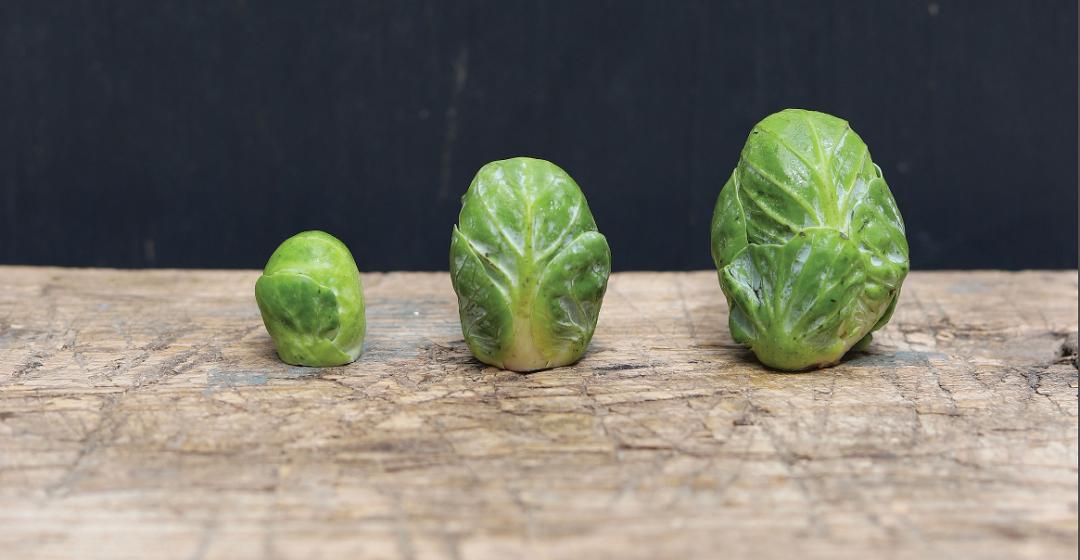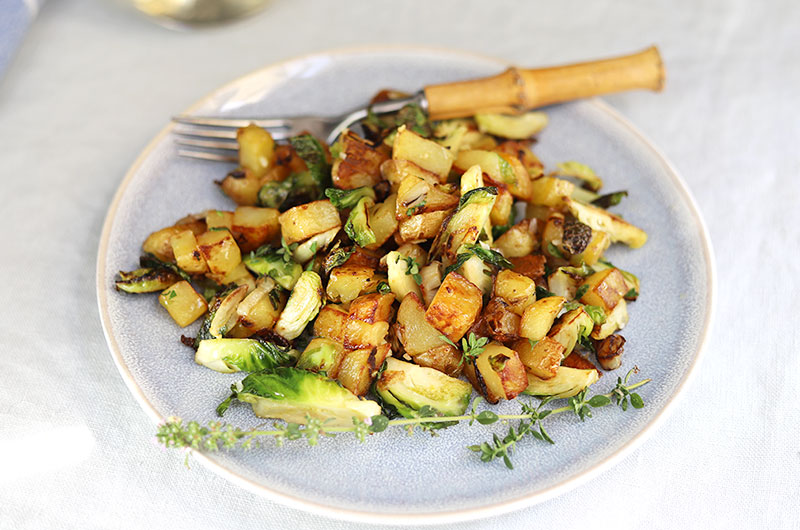I have a tiny, terrible kitchen – slated for renovation around the year 2030. Sigh. Fortunately, I have cooked in worse, and on the upside, necessity is the mother of invention and all that. My “pantry” is a metro shelf in the basement, and a former bedroom bureau in the hallway outside the kitchen holds most of our pots and pans – as well as our salad spinner, mixing bowls, candles, and dish towels.
I am not a minimalist, but faced with the reality of very little storage, I’ve winnowed down what I keep at arm’s length. While heavy cast-iron braisers, large roasting pans, and baking equipment hang out in the basement (on more shelving), the pans I use every night – especially the ones I use to cook our vegetables – are either in the hallway bureau or in the kitchen’s one undercounter cabinet. (Yes, you read that correctly – one.)
We are quirky creatures of habit in our house. We eat dinner very late, close to 8:00 p.m. many nights. We wind up every meal with a (very large) salad. We grill year-round. And it is a rare night when vegetables – sautéed, roasted, braised, or stir-fried – don’t play a starring role on the plate.
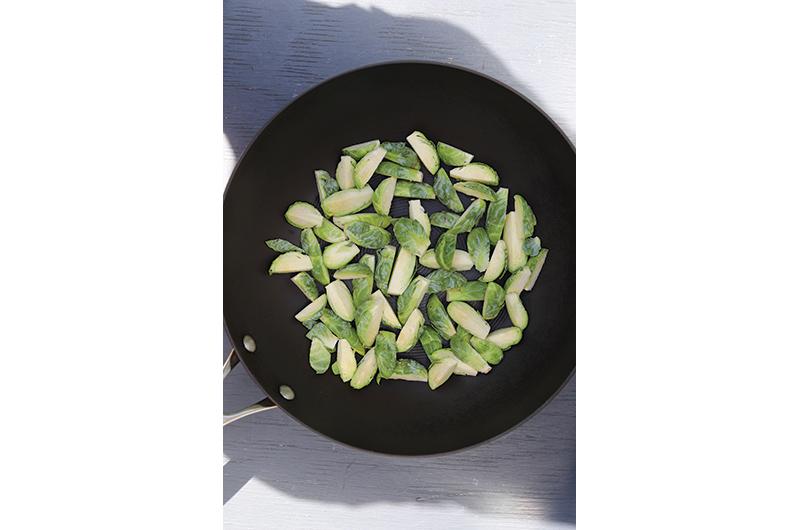
Making those vegetable dishes is a creative outlet and a pleasure for me every night, no matter how tired and cranky I am. I love to see what I can make from what I’ve got in the refrigerator; I love watching the colorful piles of diced and sliced veggies accumulate on my cutting board; I love the smell of onions browning, garlic softening, peppers charring, and sweet potatoes roasting. I love making a little sauce to finish them: lemon juice and maple syrup, soy sauce and ginger, Parmesan and cream.
I start every veggie dish by choosing a pan: a rimmed sheet pan for quick-roasting, a straight-sided skillet for braising, a slope-sided skillet (ten- or twelve-inch) for sautéing, and my nonstick stir-fry pan for stir-frying. (These are the pans I keep at the ready.) In other words, by choosing the pan, I’m choosing the cooking method too.
Depending on the method, I decide how small or how large to cut my vegetables. Take Brussels sprouts, for example. Okay, I admit, I didn’t randomly pick Brussels sprouts; in truth they are one of my favorite veggies and we eat them as soon as evenings are nippy and until the pinkletinks start singing (sometimes longer). But more importantly, they’re incredibly versatile depending on how you cut them.
Slivered or thinly sliced, Brussels sprouts can be quickly sautéed (as in the Brussels Sprouts and Yukon Gold Potato Hash with Parmesan Fried Eggs recipe, or even doused with a warm dressing to make a slaw. Quartered Brussels sprouts are perfect for stir-frying because they offer two sides for browning, and they’re (usually) just the right size for cooking through in the same amount of time it takes for the exterior to caramelize.
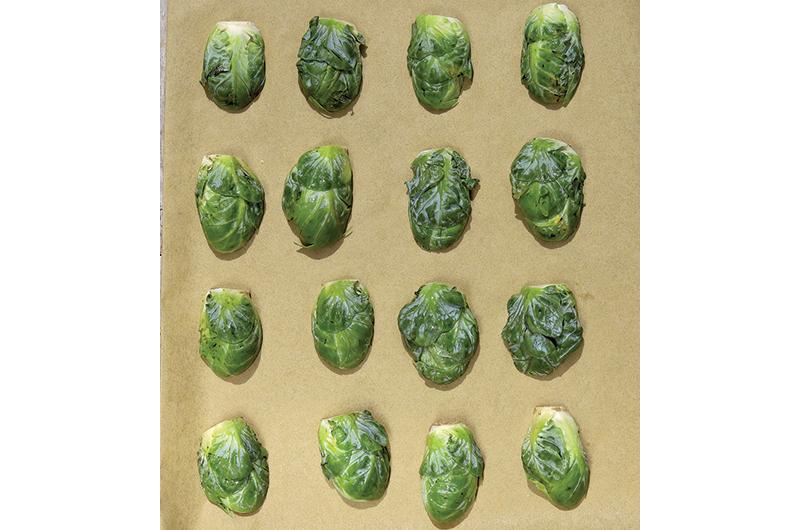
I say usually because Brussels sprouts – the lateral buds of a long, thick stalk that grows upright – vary in size. The plant naturally produces buds of different sizes (often smaller at the top of the stalk), and other factors, such as growing conditions and when the grower decides to harvest, will affect size. So these days you will find everything from baby sprouts (less than an inch long) to hefty sprouts (more than two inches long) in markets.
Happily, you also now see Brussels sprouts still on the stalk in markets (check Morning Glory Farm in Edgartown beginning in October) and grocery stores. But if you wind up with a mix of large and small sprouts, you can cut large ones in quarters and smaller ones in half to ensure even cooking times in many recipes.
Halving Brussels sprouts is my preference when roasting on a sheet pan in a very hot oven. By arranging the halved sprouts cut-side down on the sheet pan, the bottoms get nicely browned and trap the moisture inside of the sprout, helping it to cook through, and the dome-shaped top gets a little crispy. However, if I’m roasting sprouts in a ceramic or glass baking dish with other veggies (meaning things are crowded), quartered sprouts make sense.
There is one other lovely option for prepping and cooking Brussels sprouts (you notice I’m avoiding whole and boiled altogether): separating the sprouts into individual leaves and gently softening the leaves in butter in a small skillet. Better still, let them join up with thinly sliced leeks, salt and pepper, some Parmigiano, and fresh thyme. Peeling the leaves is a labor of love, of course, and you must use a paring knife to trim the bottoms repeatedly to get the leaves off. So while they cook quickly, you have to factor in prep time and how many hungry eaters you’re feeding. I wouldn’t peel Brussels sprouts for a crowd without a kitchen crew!
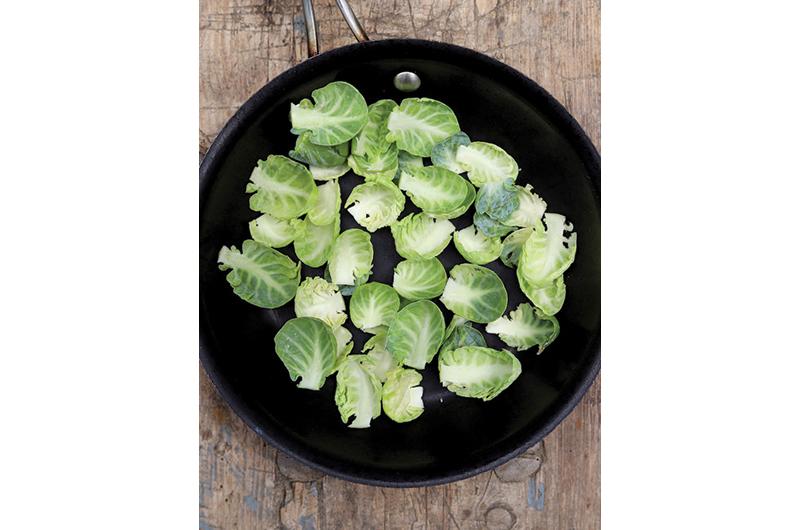
By matching the size of your vegetable to the ideal pan and cooking method, you’re halfway to delicious. To complete the flavor equation, follow a few tips. In sautés and stir-fries, combine dense vegetables (such as Brussels sprouts!) with tender aromatic vegetables, such as onions (or any allium), peppers, and mushrooms, that lend both moisture and flavor while cooking. As the vegetables travel around the pan together, they release steam and help each other cook.
Next, add finely chopped aromatics, such as garlic and ginger, toward the very end of cooking (any earlier and they will burn). Be generous with fresh herbs. And don’t forget a boost of acid. My favorite restaurant Brussels sprouts dish is Chef Ben deForest’s crispy roasted Brussels sprouts with preserved lemon and Parmigiano-Reggiano at the Red Cat Kitchen in Oak Bluffs. That preserved lemon is the perfect counterpoint to the nutty, earthy flavor of a roasted sprout.
There are endless ways to enhance the natural character of the Brussels sprout, and I’ve put all these tips and tricks together for you in my “hash” of Brussels sprouts and Yukon gold potatoes, an all-in-one skillet side dish or vegetarian supper. Try this recipe and one of the many other Brussels sprouts recipes on cookthevineyard.com; then improvise your own. With your favorite pan, of course – hopefully one that you keep nearby and not in the basement, up in the attic, or on the back porch.

